As adventurers and vacationers travelling from Southeast Asia, we have this unending fascination for temperate regions’ changing seasons. There’s the radiant blossoming of spring, the welcoming warmth of summer, and the earthy palette of autumn — all of which we find so enchanting. But even more beguiling to us who live in the tropics are the winsome scenes of winter.
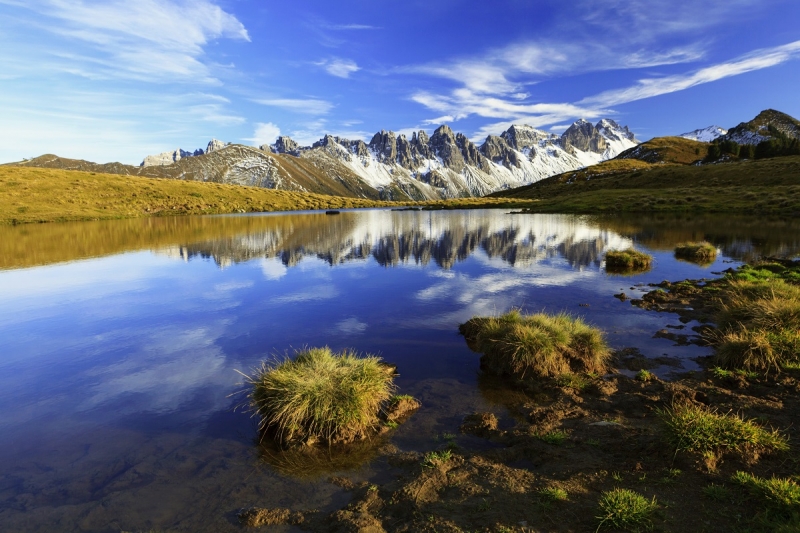
Lake Salfeinssee Senderstal | Image credit: Innsbruck Tourismus – Moser
There’s just something about snowfall and lacing up a pair of ice skates, skiing and sledding, winter wear, and frosted sights that beckon to those who only experience sun and rain all year. The tropics certainly has its own allure, but for most Southeast Asians, the lure of snow remains novel — along with the idea of planning a holiday in one of the world’s most culturally rich winter wonderlands, Innsbruck in Austria.
Innsbruck is the capital of Austrian state, Tyrol
Innsbruck is one of Europe’s beautiful Alpine cities — rightly called so because of their close proximity to the Alps, perhaps the world’s most famous mountain range. Dubbed Austria’s very own “Capital of the Alps,” it is also the capital of Tyrol, a state in Western Austria that is known for historical sites, unique architecture, ski resorts, and folk traditions. Combine Tyrolean culture and heritage with the Alps’ breathtaking scenery and what you get is picture-perfect Innsbruck.
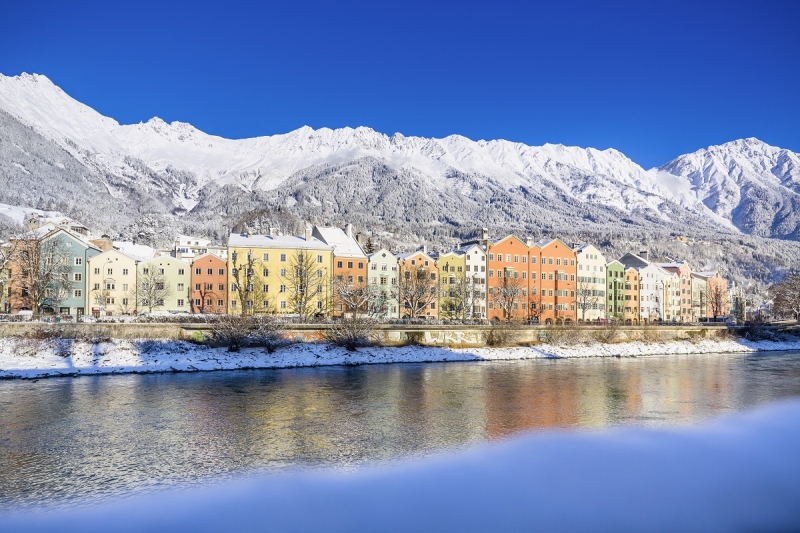
Innsbruck St Nikolaus | Image credit: Innsbruck Tourismus – Tommy Bause
The city hosted the Winter Olympics not once, but twice
Although not quite hidden, as Innsbruck gained popularity when it hosted the Winter Olympics in 1964 and 1976, the city may be considered an underrated gem for tourists. Popular places like Vienna, Salzburg, or Munich are all close by, but Innsbruck has managed to keep its off the beaten track status and thus has a really distinct appeal, especially for travellers looking to immerse in places that aren’t as jam-packed.
Tourists will feel right at home in Innsbruck, where precious, untouched mountains surround the city and hospitable locals always make an effort to put visitors at ease all throughout their stay. The people of Innsbruck call this Gemütlichkeit, a word that is hard to translate but is best described as cosiness or sociability.
Most people will tell you that Innsbruck is ideal for a ski-centric holiday, and if you’re into other winter sports. While this is true, there is so much more to Innsbruck. Read on to know why Austria’s “Capital of the Alps” makes for an unforgettable trip during any season — whether you’re up for some epic skiing or looking to explore Innsbruck’s storied streets.
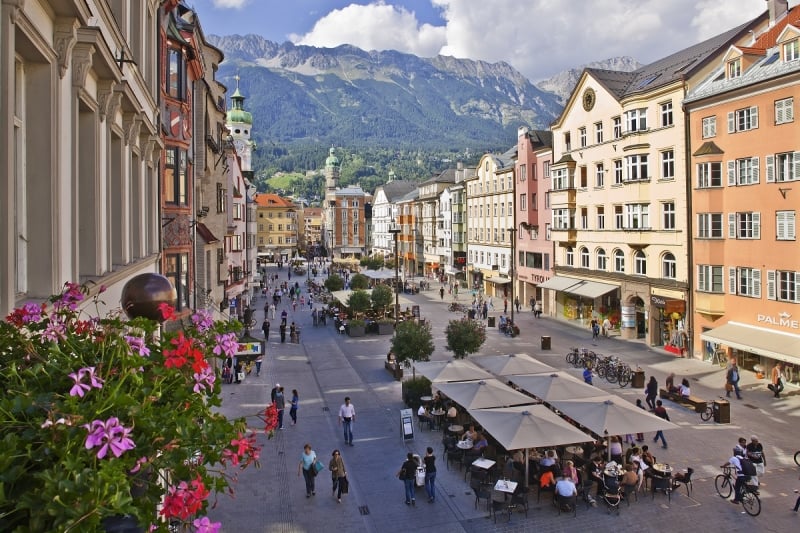
Maria Theresien Street | Image credit: Innsbruck Tourismus – Christof Lackner
Trivia: Why is the Tyrolean capital called Innsbruck? The name is actually derived from the old phrase, “Inn’s bruck”, which translates to “the bridge over the Inn River”. The Inn is a river that cuts through Switzerland, Austria, and Germany.
Innsbruck is a university town
Home to many hallowed halls of learning, Innsbruck is known as a university town. For most of the year, it houses students from the University of Innsbruck, the Innsbruck Medical University, and the Management Center Innsbruck.
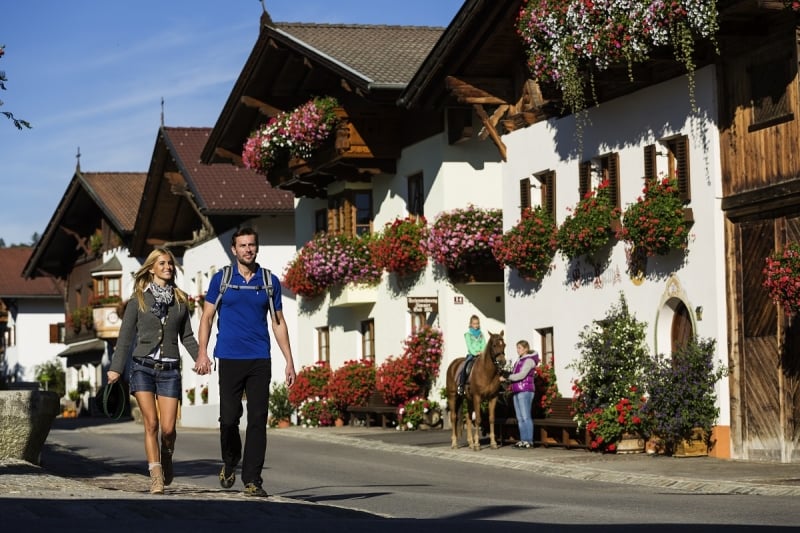
Mutters Village Center | Image credit: Innsbruck Tourismus – Mario Webhofer
Among many other things, this is probably what makes Innsbruck very tourist-friendly. Although German is the city’s first language, English is widely spoken here, too. Students would gladly help tourists with directions, and locals are always more than happy to give visitors some tips for a more enjoyable stay. Innsbruck’s large student population also keeps the city buzzing with youthful energy.
Getting around the city is a breeze
Being a university town, getting around Innsbruck is pretty easy as well. Aside from walkable streets, there are various modes of public transportation. Thanks to Innsbruck’s public transport system, the Innsbrucker Verkehrsbetriebe (IVB), trams and buses are made available to commuters ‘round the clock. There is even a night bus service that is easily booked. Or you can do as the locals do and bike around the city if you wish.
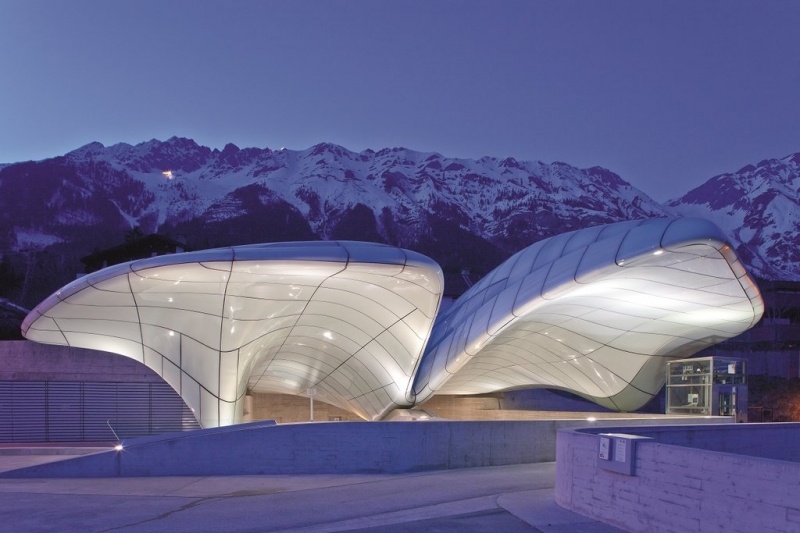
Funicular Station Hungerburg in the evening | Image credit: Innsbruck Tourismus – Christof Lackner
As far as public transport goes, though, Innsbruck is known for a futuristic funicular system called the Nordkettenbahn. The hybrid mountainside cable railway isn’t only famous for its efficiency. Its sleek, modern architecture has turned it into a tourist go-to in its own right. It was designed by the late Zaha Hadid, a celebrated architect who was the first woman to be awarded the Pritzker Architecture Prize. She also won UK’s prestigious Stirling Prize twice, which is quite the feat.
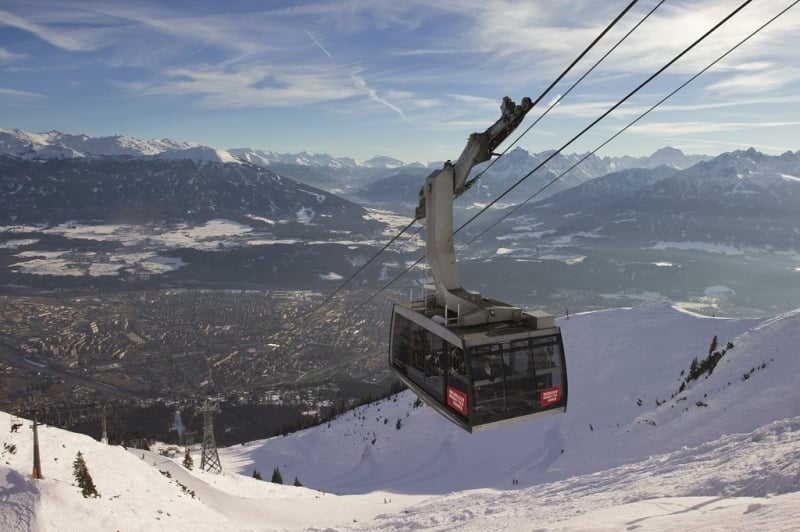
Cable Car Nordkette | Image credit: Innsbruck Tourismus – Nordkettenbahnen
The Nordkettenbahn traverses four stations: Congress, Löwenhaus, Alpenzoo, and Hungerburg. Getting aboard it allows you to see the magnificent Alpine scenery as it takes you around Innsbruck in no time. Thanks to the Nordkettenbahn, getting to the top of the Alps is cosy and quick. From the city centre, it only takes around 20 minutes to reach the top, where you can enjoy panoramic views of the Alps.
You already know that public transport in the city is painless and convenient. Now it’s time you discover what awaits you after the commute.
It’s a place filled with impressive imperial architecture
A historic settlement with archaeological evidence that dates back to the Stone Age, Innsbruck has long been a cultural and commercial hub. The valley offered protection from the Alps’ harsh weather, which is why the city is still a most prized location to date.
We need not wonder why, then, the Romans, the Bavarians, and the Germans fought for control over Innsbruck at various points in the city’s colourful history. And it is only natural for Innsbruck’s art and architecture to reflect this vibrant diversity.
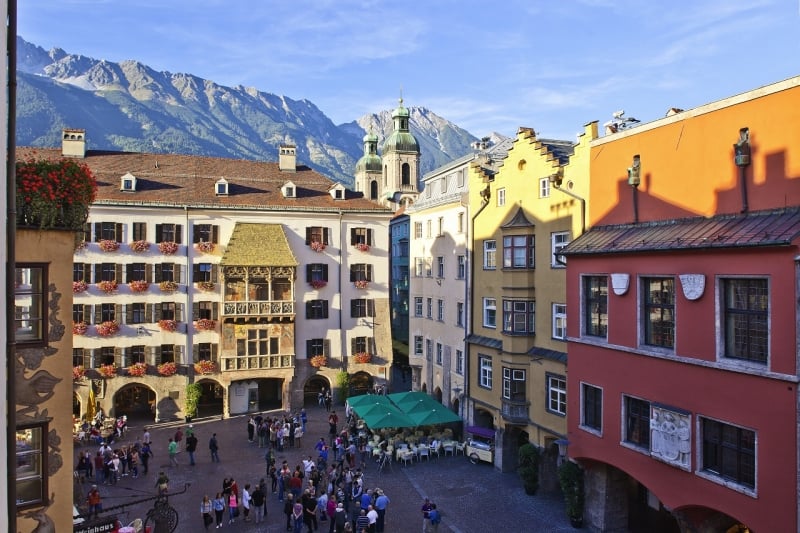
Innsbruck Old Town | Image credit: Innsbruck Tourismus – Christof Lackner
Very much ingrained in Innsbruck’s history and culture is Emperor Maximillian I’s imperial reign. Perhaps the most iconic landmark that is reminiscent of his rule as Habsburg Emperor is a striking structure called the Goldenes Dachl or the Golden Roof. Found in the Altstadt or Old Town and set against the glorious Nordkette mountain range, the Golden Roof catches tourists’ eyes at any time of the day. It is actually the roof of an alcove balcony built for Emperor Maximillian’s personal use around the year 1500.
The roof is made of 2,657 fire-gilded copper tiles that glint a bright gold when hit by the sunlight, hence the name Golden Roof. This gave Emperor Maximilian an unparalleled view of Innsbruck. From his dazzling perch, he would be able to observe the town’s hustle and bustle; at the same time, commoners could also be reminded of his influence and power by the mere sight of him peering from above, with such an opulent roof over his head.
Watching the light dance on its golden surface is quite the magical moment, but the experience isn’t complete without heading inside and learning more from the Golden Roof Museum. Make sure to check out the view that Emperor Maximilian enjoyed countless times during his time.
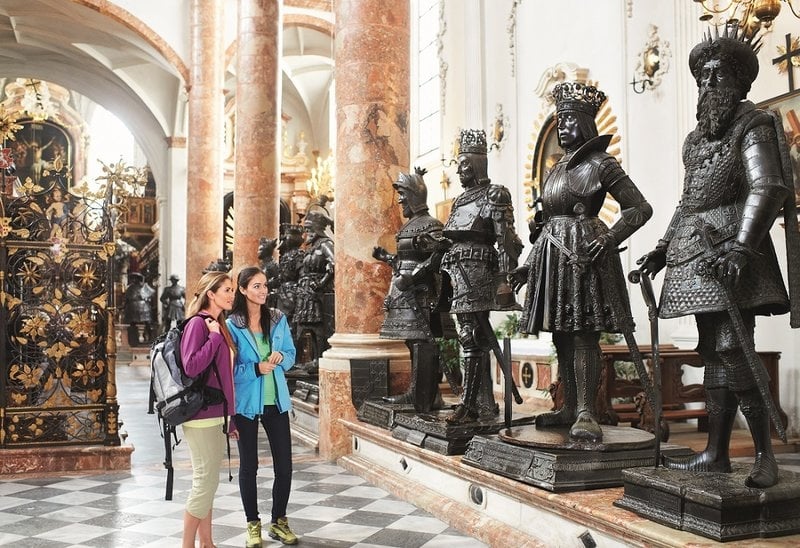
Court Church | Image credit: Innsbruck Tourismus – Edi Groeger
Other sights that give a glimpse of Innsbruck’s imperial influences are the Ambras Castle, Hofburg Imperial Palace, and the Hofkirche or Court Church, where 28 life-size bronze statues stand guard around an ornate tomb that was supposedly designed for Emperor Maximilian. Because of this, the Gothic structure is known to locals as Schwarzmander Church. Ironically, though, eight of these schwarzmander or black men are actually women. And Emperor Maximilian’s remains lie not in the tomb, but in St. George’s Cathedral in Wiener Neustadt, a city south of Vienna.
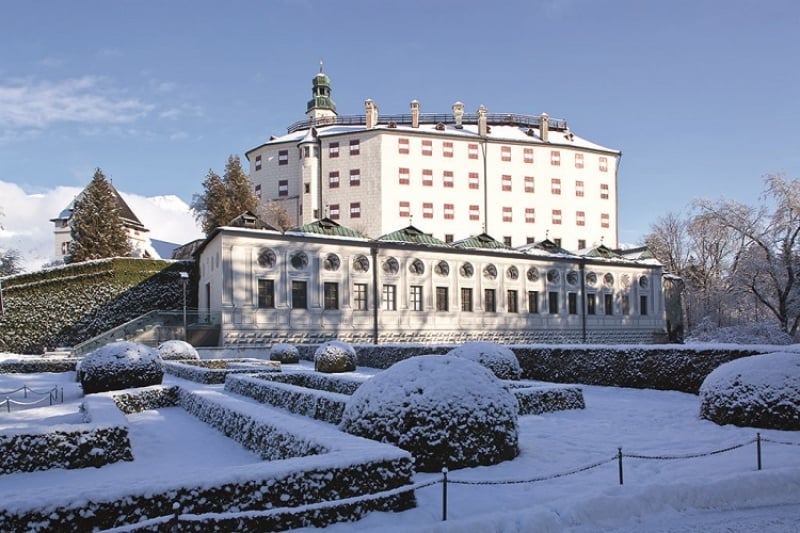
Ambras Castle | Image credit: Innsbruck Tourismus – Christof Lackner
Despite the tomb being empty, there is something unmistakably sacred about the place. Each of the 28 bronze figures is a masterpiece, and it is always so humbling to be in the presence of works of art that took years to finish. Although you won’t find Emperor Maximilian’s remains here, Court Church is the final resting place of local hero and freedom fighter, Andreas Hofer.
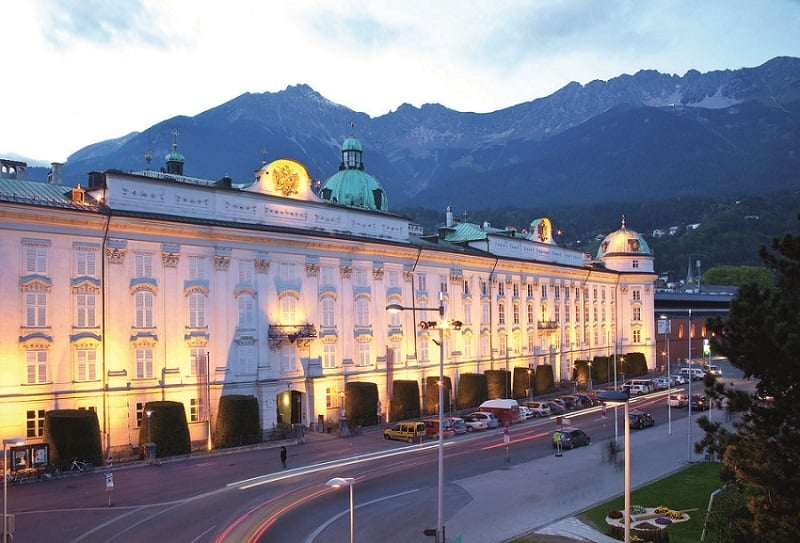
Imperial Palace Innsbruck | Image credit: Innsbruck Tourismus – Christof Lackner
Tip: When visiting the Hofburg Imperial Palace, take a guided tour so that you would learn more about its many rooms. The Ambras Castle, on the other hand, has various collections on display: The Armouries, The Chamber of Art and Wonders, The Strasser Glass Collection, The Habsburg Portrait Gallery, and its Collection of Gothic Sculpture. Don’t miss any of the collections and book your tickets in advance!
You can travel to the past by museum-hopping
With such a rich and intriguing history, it’s only fitting that Innsbruck is home to many museums. Although you might notice that almost all imperial sites come equipped with their own museums such as those seen at the Golden Roof and inside the Ambras Castle, there are many more to visit. The Museum of Tyrolean Regional Heritage houses objects that depict how early settlers lived and worked in Tyrol. Here, you’ll see a well-preserved collection that is hinged on artisan craftwork, applied arts, domestic industry, and traditional costumes, among others.
A rather unique museum experience would be a trip to the Grassmayr Bell Foundry, where visitors are given access to the bell foundry, a bell museum, and a sound studio. People can also see one of the world’s largest swinging bells, which weighs 25 tons, and the foundry’s loudest smallest bell, which truly reverberates like its bigger counterparts. According to BBC Travel, it is through the Grassmayr Bell Foundry that Innsbruck “sold bells to the world.” It is also Austria’s oldest family business, having been operational since 1599. How cool is that?
Innsbruck is a haven for ski enthusiasts and winter sports fanatics
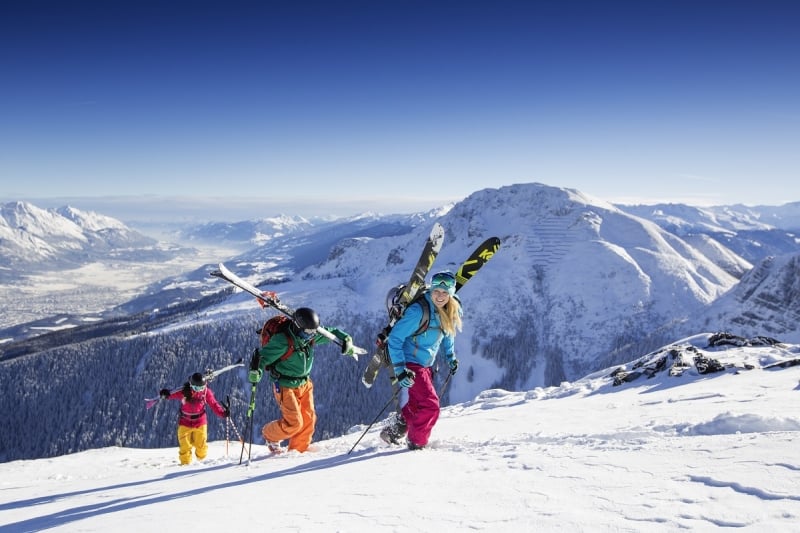
Freeriding in the Axamer Lizum | Image credit: Innsbruck Tourismus – Christian Vorhofer
It’s no secret — the Alps’ snow-capped peaks are perfect for skiing. And for many winter sports enthusiasts, Innsbruck is the ideal home base for an authentic ski experience. Olympia SkiWorld Innsbruck features nine different ski areas located in the surrounding mountains of Innsbruck. Skiers may easily access these areas with a free bus service from the city. So this basically means you can ski in a different area every day, adding unmatched scenery to the thrill of each ski session. If you’re not an expert skier, learn the ropes for a day or two with a professional ski guide.
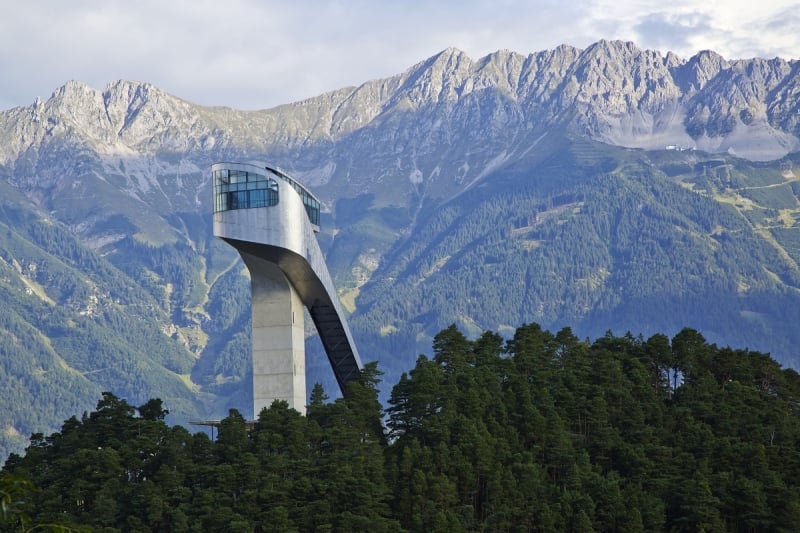
Bergisel Ski Jump | Image credit: Innsbruck Tourismus – Christof Lackner
Make sure you drop by the Bergisel, the city’s iconic ski jump site, where you can get a glimpse of Innsbruck’s Olympic heritage. Innsbruck not only hosted the Winter Olympics in 1964 and 1976, it was also where the first Winter Youth Olympic Games were held in 2012. In the summertime between May and October, you can watch professional ski jumpers hard at work during the training season, when the athletes land on a special kind of grass.
Foodies also have their fair share of fun at the Bergisel; its tower houses a panoramic restaurant that offers sumptuous dishes paired with a breathtaking vista. If you’re not in the mood for a full meal, coffee is also good here. Imagine sipping on your favourite brew while taking in the stunning scenery.
Guests are also given access to a viewing platform, where they are treated to the most picturesque views of the surrounding Alpine landscape and Innsbruck down below. The structure is yet another awe-inspiring creation of the late architect Zaha Hadid and is an iconic site you can see from the city.
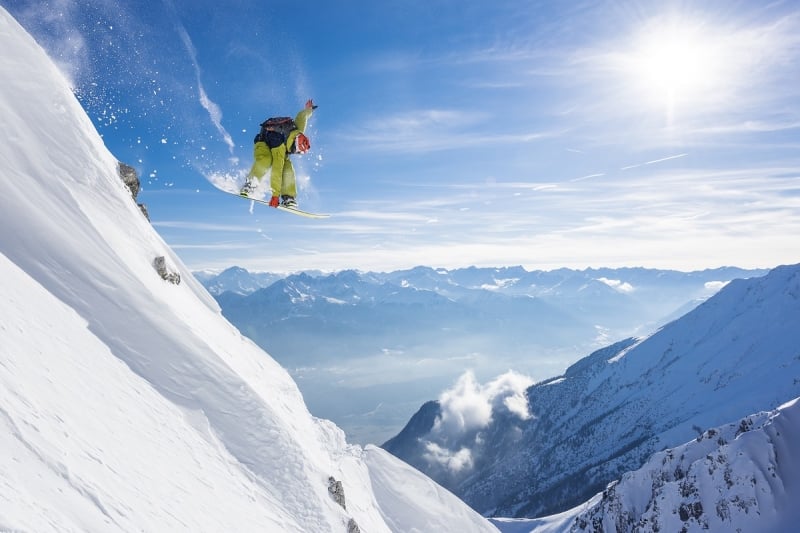
Freeriding in the Nordkette | Image credit: Innsbruck Tourismus – Klaus Polzer
Aside from skiing, there’s sledding and ice skating in neighbouring villages, too. Once you’ve had your fill of gliding down the snowy slopes, either sip on a mug of hot chocolate in the mountain huts or wander around Innsbruck’s Imperial gems and many natural wonders.
Revel in the great Alpine outdoors
The thing about Innsbruck is you have the Alps’ full glory surrounding you at all times. And you don’t have to be skiing on its slopes for you to appreciate its magnificence. Even walking along the city’s streets is a feast for the eyes — lines of buildings in muted, pastel hues set against snow-capped mountains. If you head to the river Inn, you’ll also be treated to the soothing sound of rushing water and the wind blowing in your hair. How’s that for a multisensory experience?
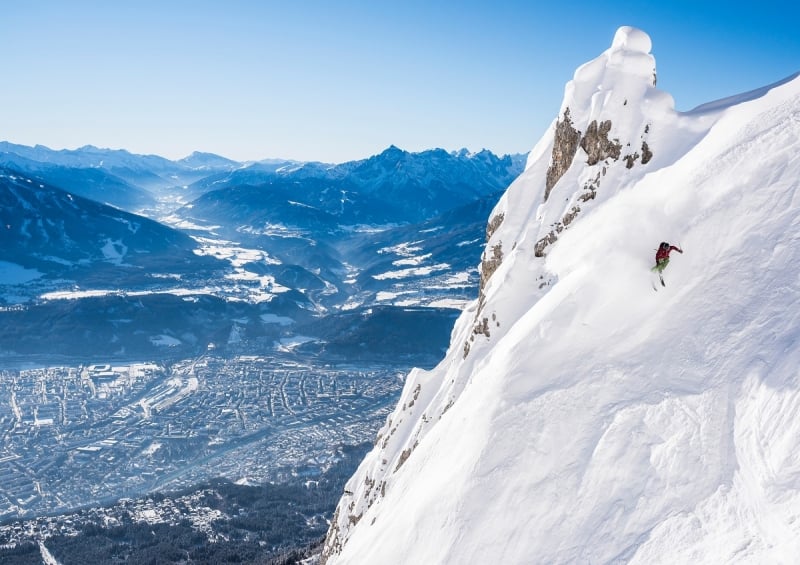
Freeride in the Nordkette | Image credit: Innsbruck Tourismus – Klaus Polzer
But if you want to really revel in the great Tyrolean outdoors, the Nordkette Mountain Experience will surely satiate your appetite for adventure. Because of its views and its lush landscape, the Nordkette Mountain Range is considered the “jewel of the Alps.” Here, you will see what is arguably Innsbruck’s best attribute: the synergy between an urban settlement and the Alpine biodiversity. The Nordkette Mountain Experience allows visitors to see how Innsbruck has advanced city life without sacrificing the mountain’s natural wonders.
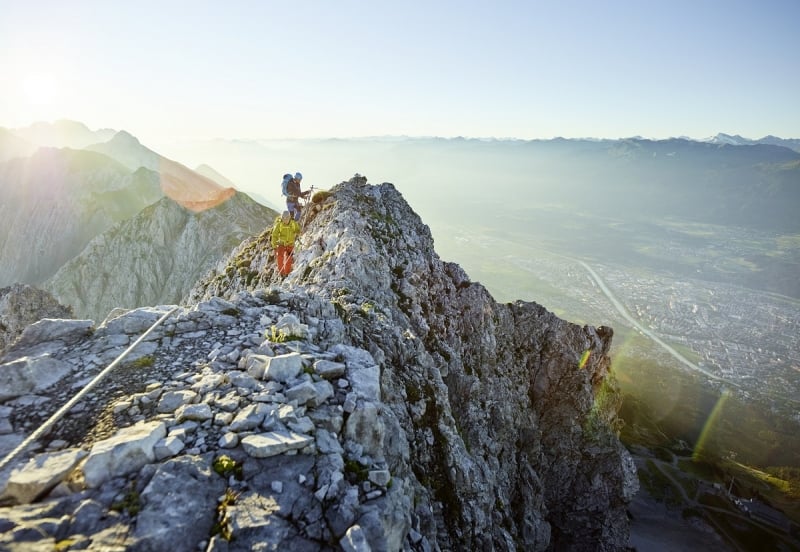
Innsbruck Tourismus Via Ferrata | Image credit: Innsbruck Tourismus – Christian Vorhofer
While the Nordkette Mountain Experience provides the best places to view the Alps’ picturesque scenery, there are other activities you can take on as well. There’s hiking and trekking, as well as snow sports and mountain climbing. You can stay at the Karwendel Alpine Park — Austria’s biggest nature park — overnight, thanks to mountain huts that offer food and accommodations. Or head to Natters, one of the charming villages within the vicinity of Innsbruck. There, you’ll find several hiking paths that lead to yet another awe-inspiring sight, the Natterer See or Lake Natters.
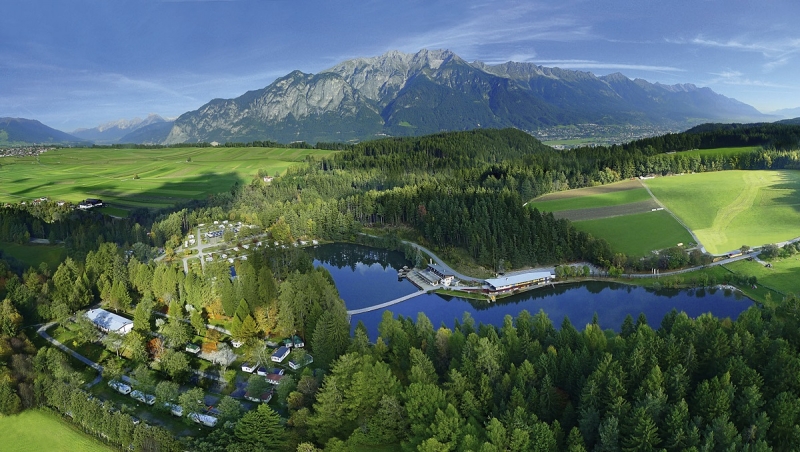
Lake Natterer | Image credit: See Natters – Natterer See
Observe Alpine wildlife up close
The Nordkette mountain range will also keep animal lovers happy. Aside from critters that roam freely in the mountains, some are also cared for at The Alpenzoo or the Alpine Zoo.
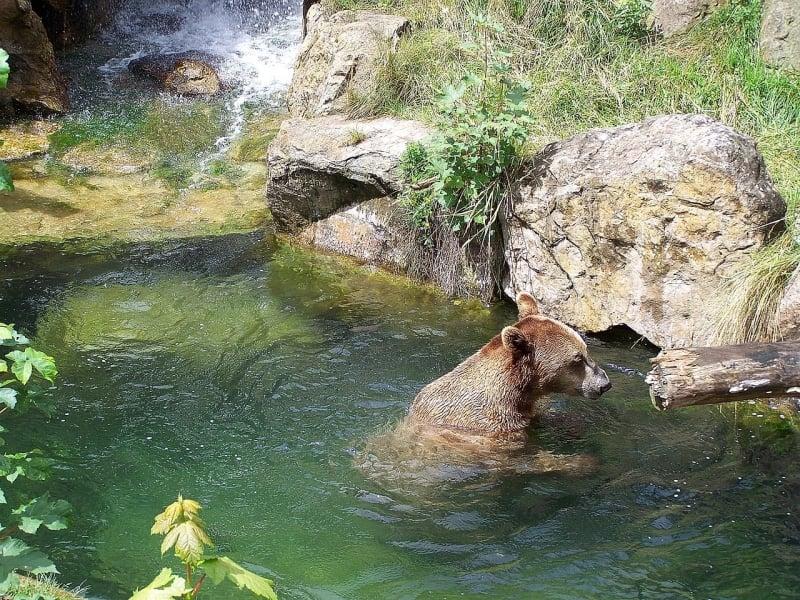
The property is a haven for all kinds of creatures indigenous to the region and is even home to a rare Golden Eagle, which was almost extinct in the 19th century. Thanks to the Alpenzoo, Innsbruck not only has a sanctuary for all Alpine wildlife, but a facility that helps with breeding and conservation programmes, too. The best part? Visitors can learn more about these animals by observing them up close. The zoo will even allow you to feed some animals used to human interaction. Just a heads up, though: Since the Alpenzoo is situated in the Nordkette, some paths are only accessible by foot. Prepare for some mountainside hiking if you’re planning a visit.
The city is also home to the famous Swarovski Crystal Worlds
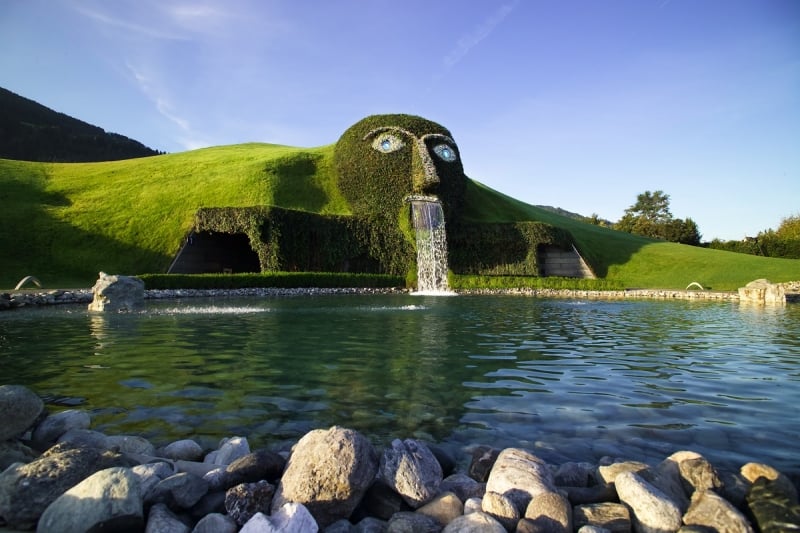
Swarovski Giant at Crystal Worlds | Image credit: Swarovski Kristallwelten
For magpies and the jewellery-obsessed, there is the Swarovski Crystal Worlds, a museum and outdoor theme park dedicated to the Swarovski brand. The attraction was opened in 1995 to celebrate Swarovski’s centennial anniversary. As you would imagine, the place looks like it was taken straight out of a crystal-encrusted fantasy. Aside from the grounds’ immaculate gardens and artworks scattered across the area, Swarovski Crystal Worlds has a collection of precious items found in the 16 Chambers of Wonder. These Chambers of Wonder are housed in what they call The Realm of the Giant. Intriguing, isn’t it?
Eat, drink, shop — all the better if it’s Christmastime
Since Innsbruck houses many students, you can bet that there are many places to hang out and grab a bite. There are several pubs and cafes, too. If you’re walking around the city, you can even treat yourself to some pizza from one of Innsbruck’s street stands.
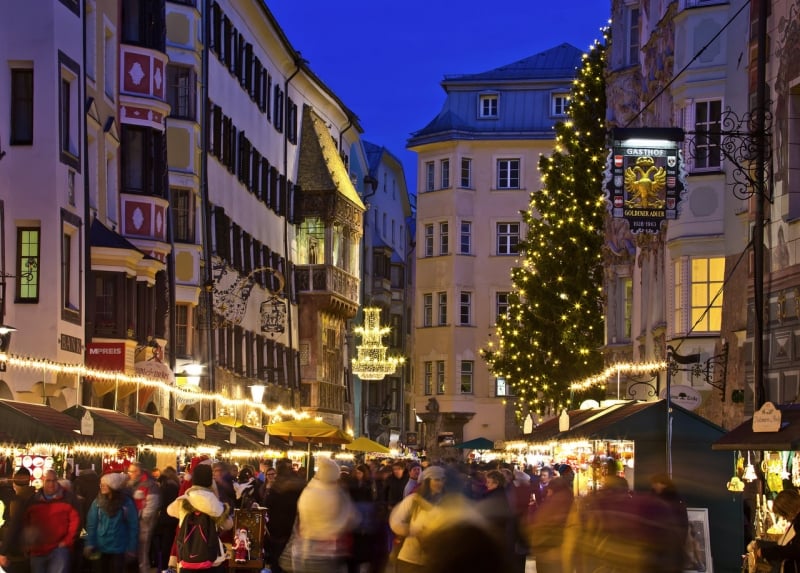
Christmas market | Image credit: Innsbruck Tourismus – Christof Lackner
But if you want your shopping and dining experience to be extra special, visit Innsbruck during the Christmas season and see the place transform into a merry town constantly abuzz with holiday cheer. Six different Christmas markets open across town and cater to the public from 15 Nov to 6 Jan. Innsbruck’s old-world charm certainly adds to the appeal. Picture this: A Gothic town glowing with Christmas lights and the Alps’ snow-capped peaks in the background. Plus, the city doesn’t get too crowded so you can shop and explore on foot with ease.
Get the best deals with your Innsbruck Card
Innsbruck isn’t only tourist-friendly, it also has attractions and activities for travellers of all types. Whether you’re an explorer eager to try out the city’s lifts and cable cars, a culture enthusiast ready for some museum-hopping, or a nature lover waiting to embrace the great Alpine outdoors (and its many critters!), Austria’s “Capital of the Alps” will always have something in store for you.
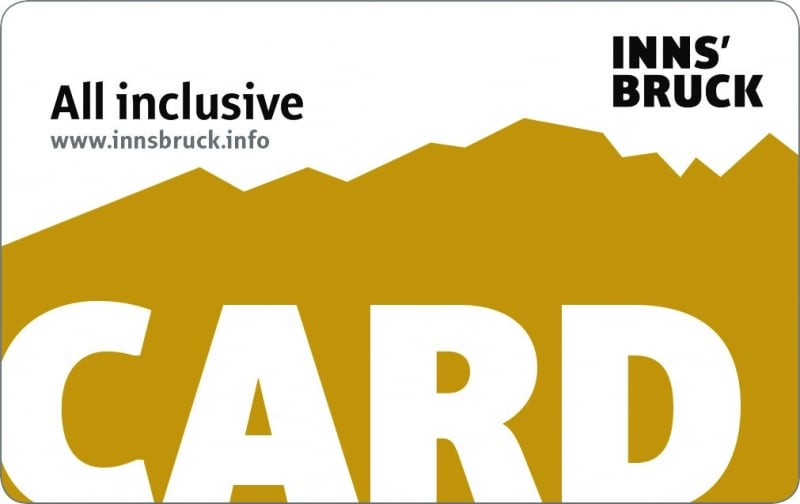
To make the most out of your Innsbruck holiday, get the all-inclusive Innsbruck Card. Offering discounts and free services all throughout your stay, the Innsbruck Card is definitely the perfect companion for any Tylorean trip. It allows free entrance to 19 sights, a return trip on all 7 cable cars, and complimentary rides on all public transport systems plus some discounts at several shops and shows. It is available for 24, 48, and 72 hours with prices from €21.50 to €29.50 for children, and €43 to €59 for adults. Click here to learn more and here to buy it.
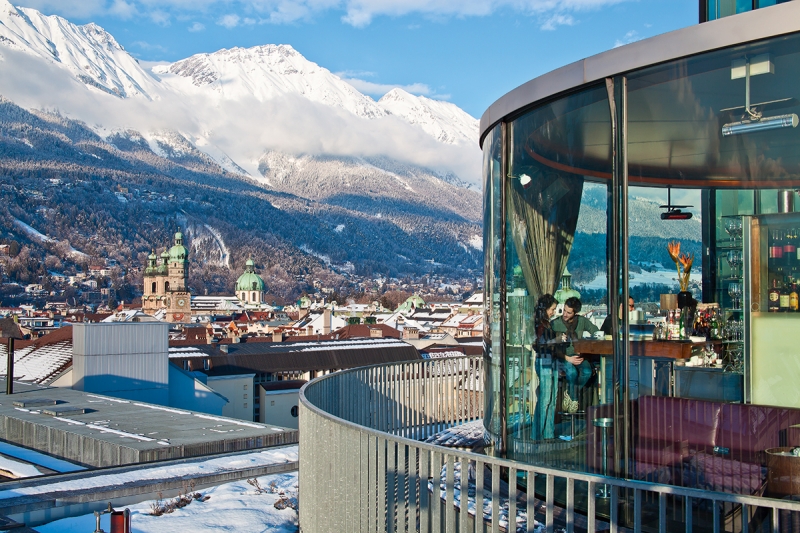
Cafe Lichtblick 360degrees in Winter | Image credit: Innsbruck Tourismus – Christof Lackner
How to get there
The fastest and most convenient way of getting to Innsbruck from Singapore is by flying with Singapore Airlines. The flight takes approximately 16 hours with a stopover in Frankfurt. Other 16-hour flight options with stopovers in Frankfurt are Lufthansa and Swiss International Air Lines. Swiss also offers flights with a stopover in Zürich. You can also book a flight with British Airways. Flying with them from Singapore will take about 17 hours with a stopover in London.
If you’re up for some sightseeing while in transit, you can also fly directly to Munich from Singapore with Singapore Airlines or Lufthansa. The flight will take almost 15 hours. From Munich, get on a train to Innsbruck, which is about two hours away. You could visit the famous Neuschwanstein Castle on the way to Austria’s “Capital of the Alps”.
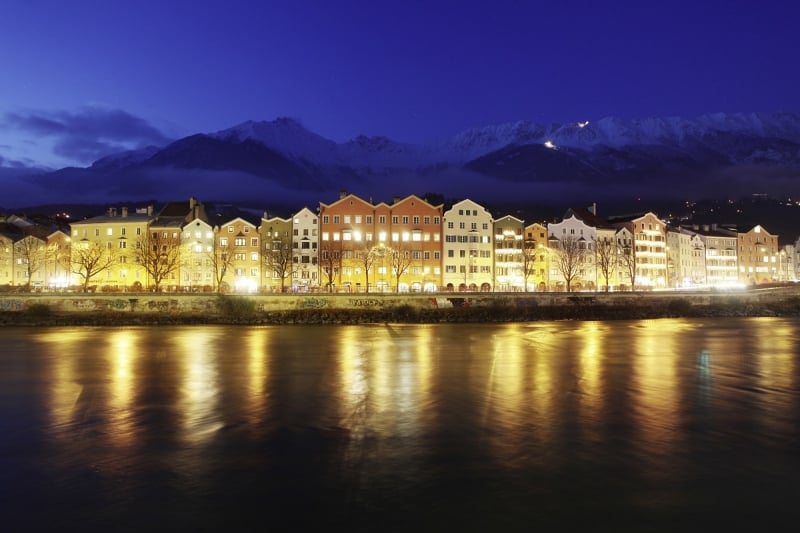
Mariahilf in the evening | Image credit: Innsbruck Tourismus – Bernhard Aichner
The Alps is definitely a destination that’s at the top of many travel bucket lists. So why not go on a snowy adventure and tick it off yours, too? Now that you’ve acquainted yourself with Innsbruck, plan an Austrian holiday right at the heart of the Alps. You can opt to go during the summer, when the weather is perfect for long, leisurely walks. Or you can visit during winter, when everything transforms into a wonderland blanketed with snow. Who knows? You might just fall in love with the culture of Tyrol and even develop a taste for skiing, if you haven’t yet.
For more information, please visit Innsbruck Tourism’s official website and Facebook page.
Brought to you by Austrian National Tourist Office (ANTO) and Innsbruck Tourism Office.




